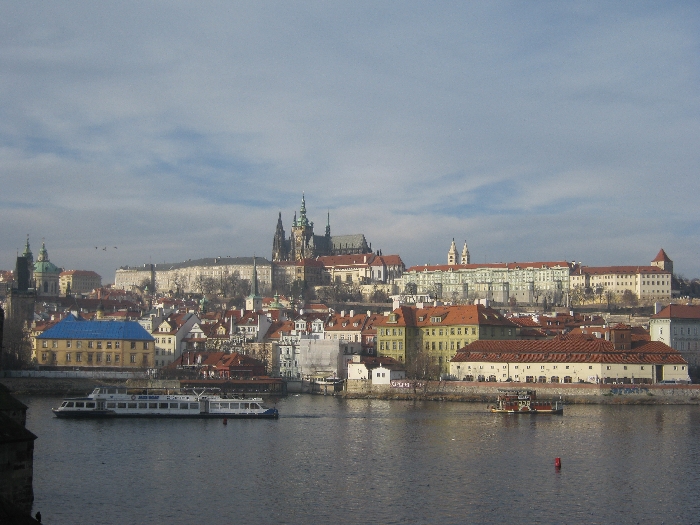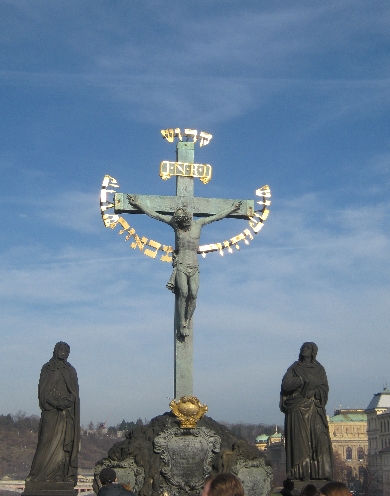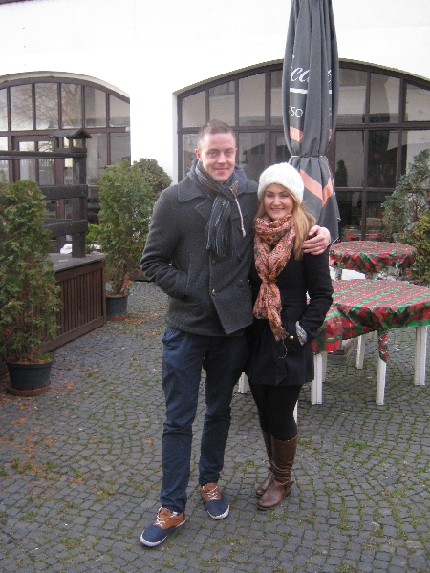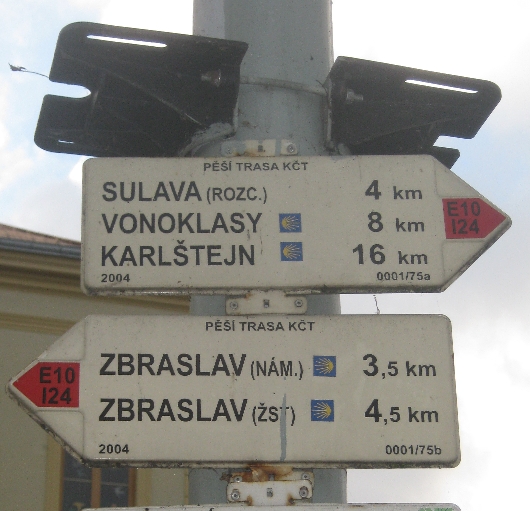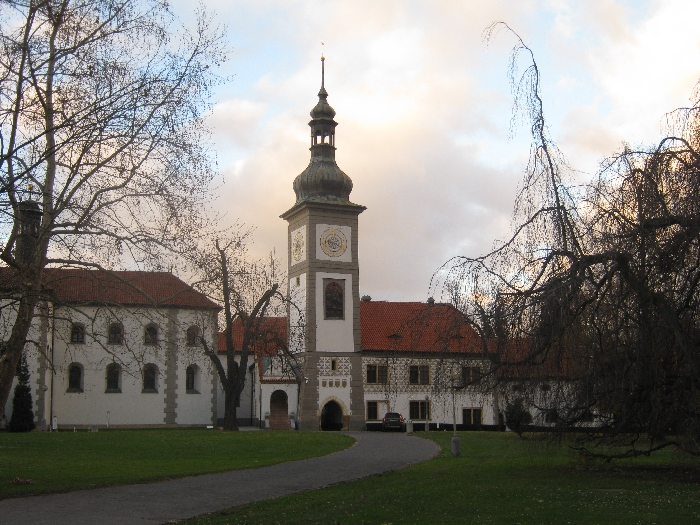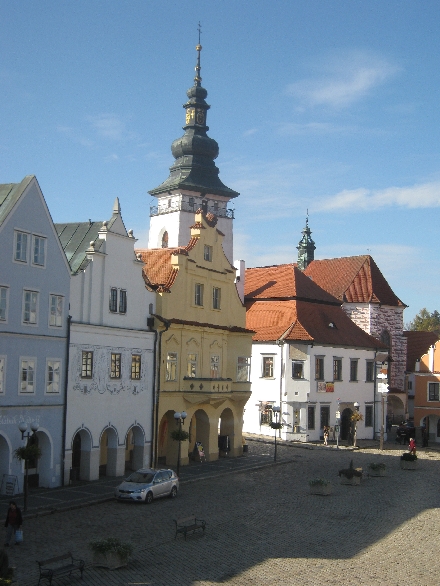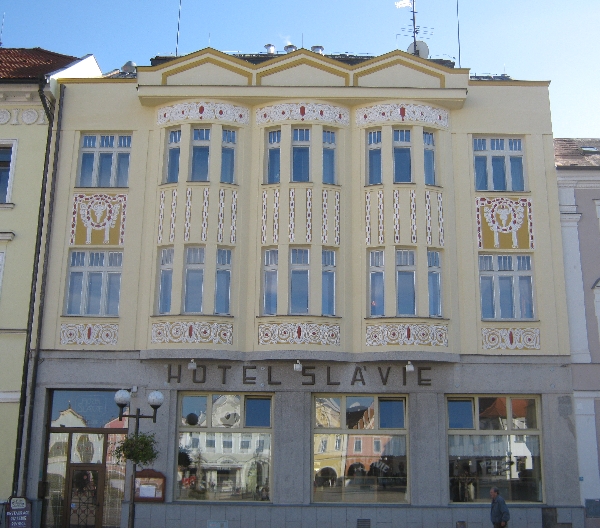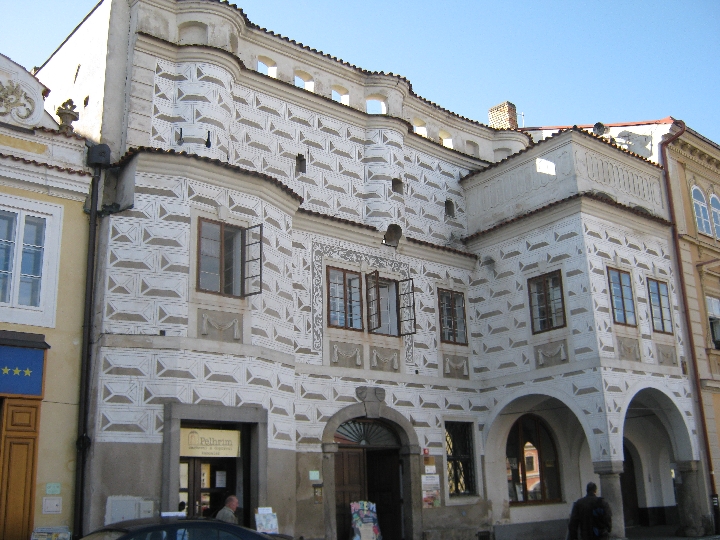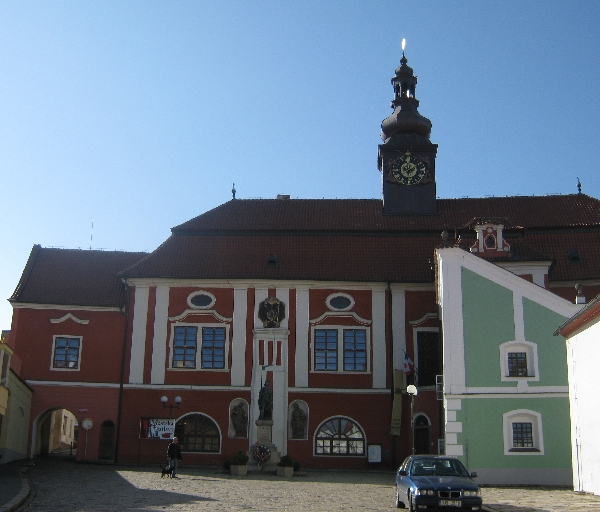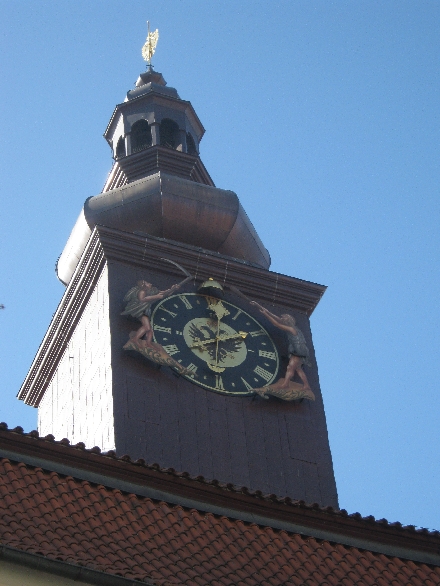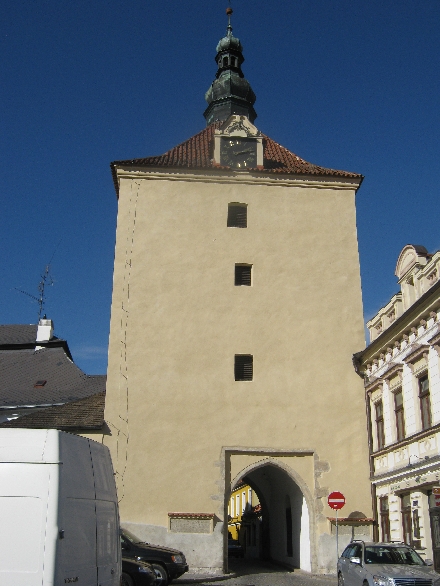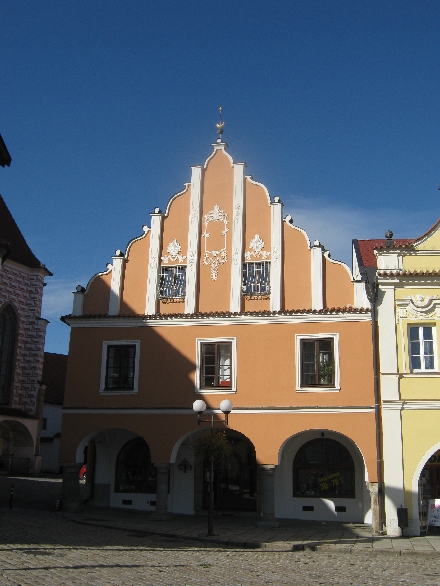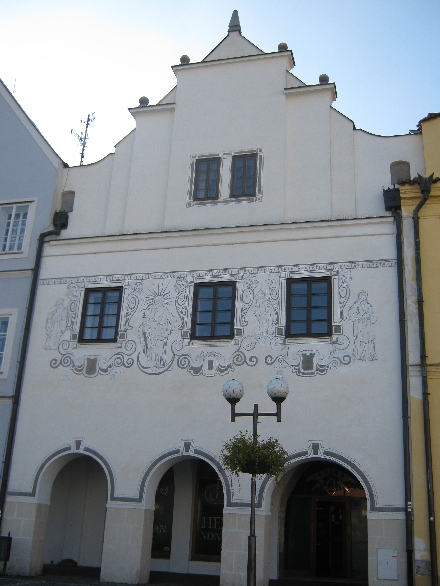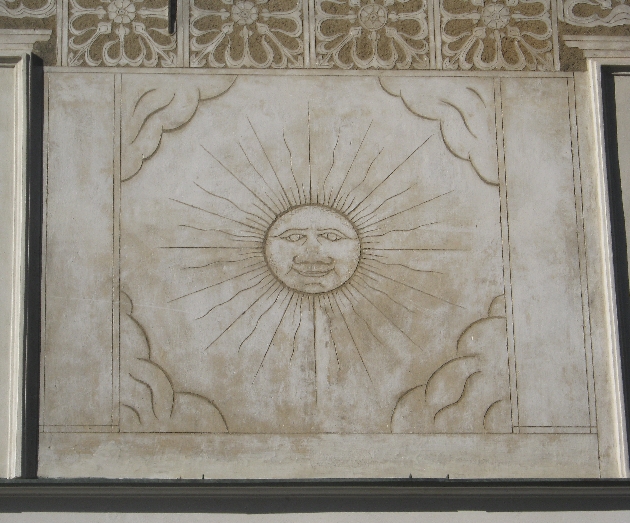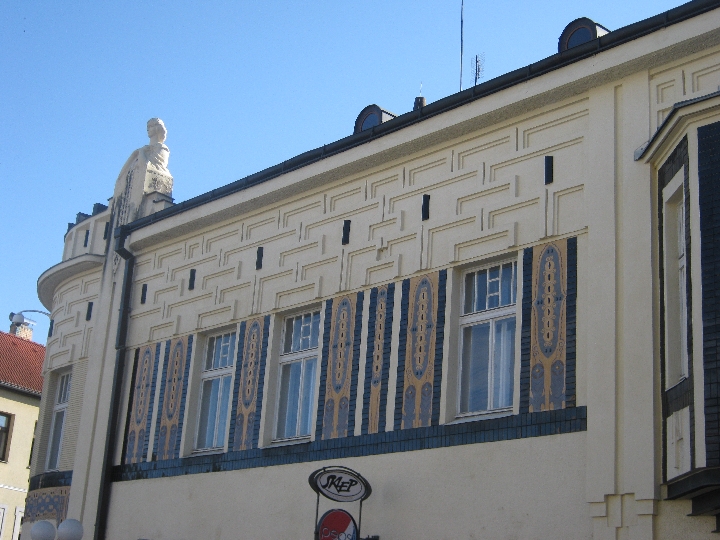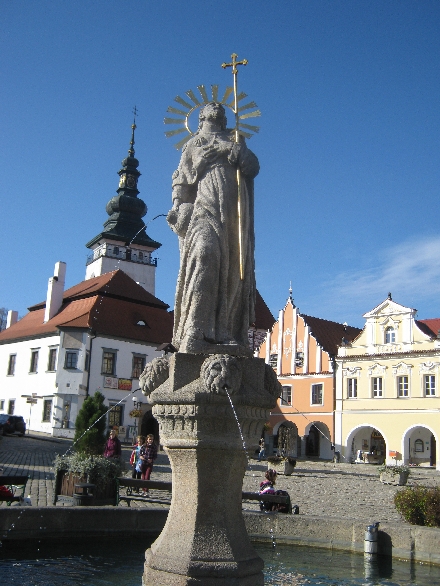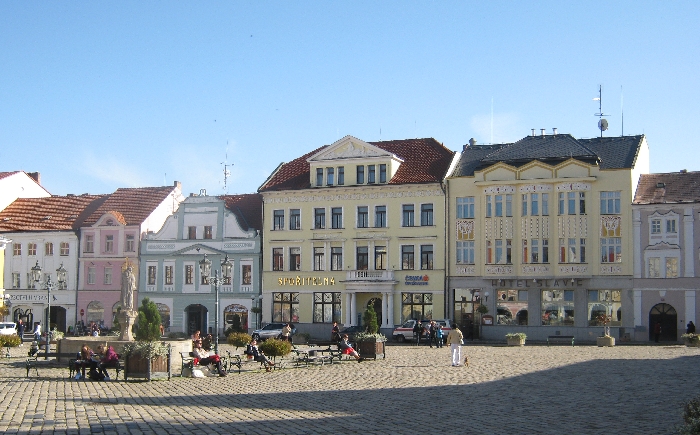
My sincere apologies that it is exactly one month since I last posted anything here on my blog. Long-standing followers will know that this is an extremely rare occurrence. Over the next couple of weeks, I do hope to write several new blogposts to compensate.
As I explained in responding to my Liebster Blogger Awarder Emily, answering her Question 3, I’ve spent two weeks of August, walking with my pilgrim wife Sybille. During that time, I had virtually no access to the internet – hence the absence of blog posts. I only returned to Prague last Thursday evening and this afternoon and evening is the first real opportunity I’ve had to compile a new post.
When Sybille first planned her pilgrimage, walking from Prague to Santiago de Compostela, the idea that I would join and walk with her for two weeks of my annual leave in August, seemed perfectly simple. But as the time for doing so drew near, the practical reality, became somewhat more complicated.
Sybille is deliberately not walking to a set timetable. Therefore, exactly where she would be by the time I was set to join her, was always going to be a crucial issue. My original plan was to fly to a major centre and then use public transport. As the time of my planned departure approached, flying to Geneva looked like the best option. But then Sybille said, ‘Why not drive?’ I did the arithmetic and found that the cost of petrol, together with a Swiss motorway vignette, was actually no more than the cost of a return flight from Prague to Geneva. The only problem then, was finding a safe place where I could leave my car for two weeks.
The solution to my problem came in the form of Sarah, a priest in the Swiss Old Catholic Church / Christkatholische Kirche der Schweiz / Eglise catholique-chrétienne de Suissean, who is an online friend of Sybille. Sarah and her husband Michael, live in Langenthal, north of Bern. So on Thursday 7th August, I drove from Prague to Langenthal and parked my car, by prior arrangement organised by Sarah, in the private car park of the nearby Swiss Reformed Church called Zwinglihaus. Numerous jokes have since been cracked about how reformed the ‘Carly’ is now, having sat there for two weeks 🙂
Once I’d transferred my rucksack, together with a bag of various things Sybille had asked me to bring for her, from my car to Michael and Sarah’s car, they then drove me south to Merligen where Sybille was staying that night. Then they insisted on taking us both out to a nearby restaurant for a most enjoyable evening meal of fish from the adjacent Thunersee, washed down with a most quaffable locally produced white wine.

Sybille and I spent that first night sleeping in this little cabin in the grounds of the guest house of the Christusträger Communität, a small group of Lutheran brothers. You can click on this link to find out more about what they do and use ‘Google translate’ if you cannot read German 🙂

This is the main guest house where we had breakfast the following morning.

And this is the view that greeted us that morning.
After breakfast, we set off to walk together along the Jacobswege Schweiz, heading towards Thun. Our route followed the side of the Thunersee which meant it was basically flat, a great bonus for me on my first day of walking!

We reached Thun early in the afternoon. Below is a close up view of the beautifully decorated covered bridge which you can see in the foreground of the photograph above. The amount of water passing under the bridge is indicative of the very heavy rainfall that Switzerland had experienced in the previous few weeks and through which Sybille had been walking. We were therefore both thankful that our first day walking together was fine and sunny.


We walked on out of Thun, now on the opposite side of the lake, visiting this delightful Swiss Reformed Church on the way. One of the most pleasing aspects of our pilgrimage through Switzerland was that nearly every Church we passed was open and welcoming to visitors. In several of them, the lights were on sensors which came on when we walked in and presumably went off soon after we left!
However, that first day, we did struggle to find somewhere to stay overnight. The tourist office in Thun could only offer us a ridiculously expensive hotel room and the B & B in a village five km out of Thun, which would have been ideal, was already fully booked as Sybille discovered when she phoned earlier in the day.
Fortunately, Sybille then had the brilliant idea to phone another B & B in Einigen which appeared in her accommodation list because it lies on an alternative route that involves taking the ferry from Merligen across the Thunersee. The answer to Sybille’s enquiry was positive so, although it meant a three kilometre diversion from our route with the last section inevitably being uphill, the accommodation, host and view made it more than worthwhile.
Later that evening, a thunderstorm broke, followed by a rainbow which I just managed to capture in this photograph taken from our bedroom balcony.




